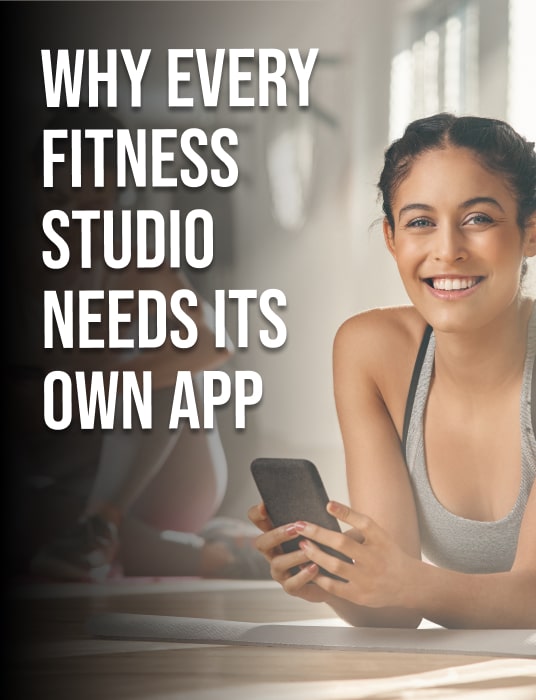Are You Earning Up to Your Potential?
Most personal trainers are undervaluing their time and skills. Our Personal trainer Revenue Calculator helps you find out what you should be making, and how to get there.
No guesswork. Just real numbers.
.jpg)
As a personal trainer, your clients’ success depends on how well you understand their goals, health history, limitations, and lifestyle habits. A structured onboarding questionnaire helps you collect this information upfront, so you can design smarter programs and deliver a more personalized experience from day one. Many coaches now streamline this entire process using personal training software that automates form collection, stores client data securely, and ensures nothing important gets missed during onboarding.
Define Your Objectives:
Before diving into the questionnaire creation process, it's crucial to identify your objectives. Consider the following:

Choose the Right Format:
When it comes to the questionnaire format, simplicity and clarity are key. Opt for a user-friendly and accessible format, such as an online form or a printable PDF. This allows clients to fill out the questionnaire at their convenience and ensures the accuracy and legibility of their responses.

💪 Got an idea for a brand? Let's bring it to life.
Launch your own fitness app with FitBudd in minutes!

💪 Got your brand name? Let’s bring it to life.
Launch your own fitness app with FitBudd in minutes!


88% trainers worldwide gave us 5 stars
Transform your fitness business with the power of your branded app on iOS and Android.
Try for FREEEssential Sections and Questions:
To make the task of creating your own onboarding questionnaire easy, here are some prevalent and important questions you must add:
a. Personal Information:
Gather basic details such as name, age, gender, contact information, and emergency contact.
b. Health History:
Inquire about any pre-existing medical conditions, past injuries, or other health concerns that may impact their training.
c. Fitness Goals:
Understand clients' objectives, whether it's weight loss, muscle gain, increased stamina, or overall wellness.

d. Exercise Experience:
Determine their prior fitness experience, including any specific training methods or activities they have engaged in.
e. Lifestyle Factors:
Ask about their daily routine, occupation, stress levels, and sleep patterns, as these factors can influence their training progress.
f. Preferences:
Inquire about preferred workout types, time of day for training, and any specific likes or dislikes related to fitness activities.
Use Clear and Concise Language:
Ensure that your questions are straightforward, easy to understand, and not open to misinterpretation. This helps clients provide accurate information and saves time for both parties. Break down complex questions into smaller, more digestible parts if necessary.

In the above example, the question is clear and concise, providing specific instructions on what information to provide. It breaks down the question into three parts: types of exercises, frequency, and duration. This allows the client to easily understand and provide accurate details about their exercise routine.
In contrast, the wrong way is wordy and lacks clarity. It combines multiple aspects of the question into a long sentence, making it harder for the client to understand what information is required. The lack of structure and clarity in the question may lead to confusion and potentially inaccurate responses.
Remember, using clear and concise language in your onboarding questionnaire is essential to ensure that clients understand the questions and can provide accurate information, ultimately leading to a more effective and personalized training experience.
Prioritize Relevance and Customization:
Tailor your questionnaire to address the specific needs of each client. While some questions may be applicable to all, consider adding optional sections that allow clients to provide additional information if they feel comfortable. This personalization demonstrates your commitment to their success.

Download our free onboarding forms template to kickstart your client onboarding process with ease.
Regularly Update and Refine:
As your clients progress and their needs evolve, update and refine your questionnaire to reflect these changes. Regularly review the information you collect to ensure it remains relevant and valuable throughout the client's fitness journey.
Ensure Data Privacy and Security:
When collecting personal information, prioritize data privacy and security. Clearly communicate your commitment to confidentiality and take necessary precautions to protect your clients' sensitive information.

People Also Ask (PAA)
1. What is an onboarding questionnaire for personal trainers?
An onboarding questionnaire for personal trainers is a tool used to gather essential information about new clients, including their fitness goals, health history, exercise preferences, and lifestyle habits. This information enables trainers to design personalized fitness programs that cater to individual needs and objectives.
2. Why is it important for personal trainers to use an onboarding questionnaire?
Utilizing an onboarding questionnaire allows personal trainers to understand their clients' backgrounds, health conditions, and fitness aspirations. This understanding is crucial for creating safe, effective, and customized training plans that enhance client satisfaction and success.
3. What key components should be included in a personal training onboarding questionnaire?
A comprehensive onboarding questionnaire should include sections on personal information, health and medical history, fitness goals, exercise experience, lifestyle factors, and preferences. These components provide a holistic view of the client, facilitating tailored program design.
4. How can personal trainers create an effective onboarding questionnaire?
Personal trainers can create an effective onboarding questionnaire by clearly defining their objectives, choosing a user-friendly format, using concise language, and including essential sections that cover all aspects of the client's health and fitness background.
5. What are the benefits of using an onboarding questionnaire in personal training?
The benefits of using an onboarding questionnaire include improved client-trainer communication, personalized program development, enhanced client safety, and increased likelihood of achieving client goals. It also streamlines the onboarding process, making it more efficient.
Conclusion:
Crafting a comprehensive and well-designed onboarding questionnaire is a critical step in personal training. By implementing the tips outlined in this guide, you can streamline your client onboarding process, better understand your clients' needs, and create tailored fitness programs for optimal results.
For an automated onboarding process that simplifies client management, consider signing up for FitBudd, a leading platform that streamlines your operations, from scheduling to progress tracking, making your training experience seamless and efficient.
Sign up for FitBudd today and get a 30-day free trial
Remember, the onboarding questionnaire serves as a foundation for your client-trainer relationship, setting the stage for a successful and personalized fitness journey. Invest time and attention in forming the right questionnaire for your clients and providing them with a smooth onboarding experience.
Frequently Asked Questions

Ultimate Marketing Guide for Fitness Trainers
Boost your business growth with these tried and tested marketing strategies. Free for you to download.
Download Now
Templates
These functional templates have the power to make any fitness trainer's life easier.
Subscribe To
Our Blog




























